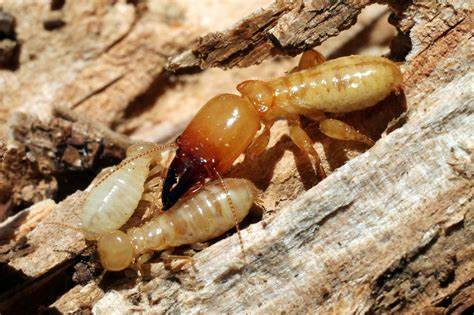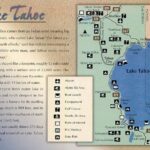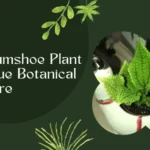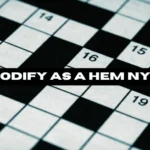Have you ever noticed small, winged insects around your home and wondered if they might be termites? These pests can cause significant damage to your property, making it crucial to identify them accurately. But what exactly do termites look like, and how can you distinguish them from other insects? In this article, we’ll explore the appearance of termites, how they differ from other pests, and what you can do if you find them in your home.
Understanding Termite Appearance
Termites are often mistaken for ants or other insects, but they have distinct features that set them apart. Here’s a closer look at what termites look like and how you can identify them.
General Features of Termites
Termites are small, soft-bodied insects that typically measure between 1/8 inch and 1 inch in length. They have a pale, creamy-white color, although some species may appear light brown or yellowish. Termites are divided into three main castes: workers, soldiers, and reproductive. Each caste has its own distinct appearance:
- Workers: These termites are the most common and are responsible for feeding the colony and caring for the young. They have a soft, white or light brown body and are about 1/4 to 1/2 inch long. Worker termites have straight antennae and a broad waist.
- Soldiers: Soldier termites are larger than workers and are equipped with powerful mandibles (jaws) for defense. Their bodies are typically pale yellow or brown, and they can range from 1/2 inch to 1 inch long. Soldiers have a larger head compared to their body and have straight antennae.
- Reproductives (Kings and Queens): These termites are responsible for mating and producing offspring. They have a darker color, usually brown or black, and can grow up to 1 inch long. Winged reproductive termites, also known as alates, are often seen during swarming events. They have long, translucent wings and a more elongated body compared to workers and soldiers.
Distinguishing Termites from Ants
Many people confuse termites with ants, but there are key differences between these two pests. Here’s how you can tell them apart:
Body Shape
One of the easiest ways to distinguish termites from ants is by examining their body shape. Termites have a straight, segmented body with a uniform width from head to tail. In contrast, ants have a pinched or segmented waist, which gives them a more hourglass-shaped body.
Antennae
The antennae of termites are straight and bead-like, while ants have bent or elbowed antennae. This difference is a good indicator when trying to identify these insects.
Wings
During swarm season, winged termites (alates) and winged ants can be found. Termite wings are of equal length, while ant wings have the front pair longer than the hind pair. Termite wings are also more translucent and have a smoky appearance compared to the opaque wings of ants.
Common Types of Termites
There are several types of termites, each with its own unique appearance and behavior. Here are the most common ones:
Subterranean Termites
Subterranean termites are the most common subspecies encountered when it comes to termite control and are known for their destructive behaviour. They live underground in colonies and build mud tubes to travel between their nests and food sources. These termites are pale white to light brown and are about 1/4 to 1/2 inch long. They are often found in soil or wooden structures close to the ground.
Drywood Termites
Drywood termite’s are found in dry, wood structures and do not require contact with the soil. They are usually light brown to reddish-brown and have a more robust body compared to subterranean termite’s. Drywood termite’s are often found in wooden furniture, beams, and other wooden items inside the home.
Formosan Termites
Formosan termite’s are an invasive species known for their aggressive behavior and large colonies. They are similar in appearance to subterranean termite’s but are larger and have a yellowish-brown color. Formosan termite’s can cause extensive damage quickly due to their large colony sizes and high reproductive rates.
Dampwood Termites
Dampwood termite’s prefer moist, decaying wood and are typically found in areas with high humidity. They are larger than other termite’s, with a reddish-brown color. Dampwood termite’s are often found in wooden structures with poor ventilation or water damage.
Other pests that can invade your home. For instance, finding a bed bug nest in couch cushions or upholstery can lead to severe infestations, which often require immediate professional treatment.
Signs of a Termite Infestation
Recognizing the signs of a termite infestation early can help prevent significant damage to your property. Here are some common indicators to look out for:
Mud Tubes
Subterranean termites build mud tubes to protect themselves while traveling between their nest and food sources. These tubes are often found on the exterior of buildings, along foundation walls, or in basements. They look like pencil-sized tunnels made of mud and debris.
Wood Damage
Termite’s feed on wood, and their presence can lead to noticeable damage. If you tap on wooden surfaces and hear a hollow sound or notice wooden areas that are crumbling or breaking easily, it could be a sign of termite damage.
Swarmers
During the swarming season, winged reproductive termite’s (alates) leave their nests to find new colonies. If you see a swarm of flying insects around your home, especially in the spring or fall, it could indicate a nearby termite infestation.
Frass
Drywood termite’s produce frass (termite droppings) as they feed on wood. These droppings look like small, pellet-like particles and are often found near infested wood. The presence of frass can indicate an active drywood termite infestation.
What to Do If You Find Termites
If you discover termite’s in your home, it’s important to take action promptly to prevent further damage. Here’s what you should do:
Contact a Pest Control Professional
The best way to deal with a termite infestation is to contact a licensed pest control professional. They can conduct a thorough inspection, identify the type of termites and recommend an appropriate treatment plan.
Prevent Future Infestations
To prevent future termite problems, consider taking the following measures:
- Eliminate Moisture: Fix leaks and improve ventilation to reduce moisture, which can attract termite’s.
- Remove Wood Debris: Keep firewood, lumber, and other wood materials away from your home’s foundation.
- Seal Entry Points: Seal cracks and gaps in your home’s exterior to prevent termite’s from entering.
Conclusion
Termite’s may be small, but they can cause significant damage if left unchecked. By understanding what termite’s look like and how to identify them, you can take steps to protect your home from these destructive pests. If you suspect a termite infestation, contact a pest control professional to assess the situation and implement effective treatment solutions. Staying informed and proactive can help you keep your home safe from termite damage and ensure that these pests don’t become a bigger problem than they need to be.







